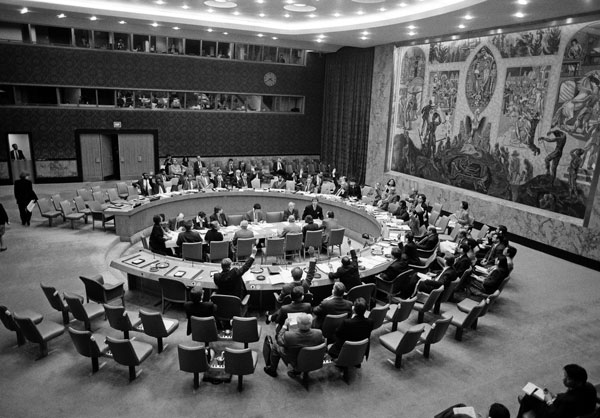Examining the Scope of Consent in the International Criminal Law of Rape
International criminal law is predicated on the objective of holding individual persons responsible for committing grave acts of violence. Although forms of sexual and gender-based violence have been part of several instances of conflict in the past, it was not until the 1990s that criminal responsibility for engaging in explicit forms of sexual and gender-based violence was enforced. Both the statutes of the International Criminal Tribunal for Yugoslavia and that of the International Criminal Tribunal for Rwanda for the first time recognised rape as a crime against humanity. Building on this, the Rome Statute was adopted in the year 1998 making it the first comprehensive international legal instrument to explicitly recognise various forms of sexual gender-based crimes including rape, as violations of international law. These include, among other things, sexual slavery, enforced prostitution, forced pregnancy, enforced sterilisation.

In order to bring a claim of sexual violence, specifically, rape, under the ambit of international criminal law, both, the elements of rape, as well as the international elements of conflict, have to be proved. While there is a sufficient amount of clarity as to the elements constituting international crimes such as genocide, crimes against humanity and war crimes, the elements of the crime of rape by itself have been the subject matter of several tribunals. Currently, the Rome Statute defines rape broadly as an invasion of the body of a person by conduct resulting in penetration, however slight. It goes on to recognize four cases in which such as act would amount to rape – first, where there is a use of force, threat of force or coercion, second where there is a fear of violence, duress or detention and other forms why which power can be abused, third where the perpetrator is taking advantage of a coercive environment and forth where the person against whom such an act is taking place is incapable of giving consent.
The element of consent, although central to most domestic jurisdictions, was not a part of international criminal jurisprudence from the beginning. The first and the foremost elucidation of the crime of rape is found in the case decided by the ICTR, of Prosecutor v. Akayesu which sought to situate the crime of rape in the larger context of violence prevailing in conflict-ridden atmospheres. It noted that rape is said to have been committed where “a physical invasion of a sexual nature” has taken place under coercive circumstances. Notably, it left out the element of consent (or the lack thereof) as an element that is to be proved in order to bring a successful claim of rape. The focus here was on the circumstances within which the act took place and not necessarily on whether the victim consented to it.
Drawing from the ICTR, the ICTY trial chamber in Furundzija not only enlisted acts which constitute rape, it also went ahead to include force, a threat of force and coercion as constituent elements of the crime. This was hugely problematic given the fact that other forms of non-consent were left squarely out of the definition indicating that the perpetrator would not be held responsible for the crime of rape even though committed against the will of the survivor so long as there was no evidence of the use of force or coercion available. The trial chamber in Prosecutor v. Kunarac sought to remedy this problematic precedent by recognising other, more covert forms of non-consent and resistance which may not necessarily meet the threshold required to constitute force or coercion.
Even though the tribunal in Kunarac recognised the diminished scope for consent given the violent circumstances of the case, it did not rule out the possibility that victims could still give consent wholly. This implies that not only does one need to prove the existence of coercive situations but also, that the victim displayed their non-consent and that the perpetrator was aware of such non-consent. The victim, under the ICTR jurisprudence (under which consent is not a requirement to prove rape), could avoid scrutiny as regards their conduct in its entirety – an option not available to survivors of rape under the ICTY.
The tribunal in Kunarac sought to provide a definition that was progressive. However, it paved the way for victims of rape to withstand an unnecessary amount of scrutiny forcing them to provide testimonies and answer a line of questioning that was humiliating. The Rome Statute, like the ICTY statute, recognises consent as an affirmative defence. Although several conditions have to be fulfilled before introducing and admitting evidence of consent, such introduction or admissibility is not dependent on the existence or non-existence of coercive circumstances. This is a clear representation of the Kunarac decision which, although aware of the universally coercive nature of circumstances, still continues to recognise that there is scope for consent being given.
The question is not whether consent is relevant at all. The question is what is the scope of consent under international criminal law. The decision in Akayesu presupposes that the circumstances are such that there is no possibility where any semblance of consent can even begin to thrive. It left no room for consent as a constitutive factor of rape, let alone defence. A clearer understanding of this is available in the case of Prosecutor v. Gacumbitsi which unequivocally stated that the defence of consent, although available under the rules of procedure governing the ICTR, can only be invoked where the defence has been able to prove that coercive circumstances did not exist at all. Evidence of consent, therefore, would only be admissible in cases where the defence can prove that the victim was not subjected to a coercive situation. This circles back to the essence of the Akayesu judgment which states that nonconsent is to be proven by proving the existence of coercive circumstances and not by analysing the conduct of the victim or the relationship shared between the victim and the perpetrator.
Consent, in cases of international conflict, has to be placed in the context of violence. It is not necessarily just a violation of physical and sexual autonomy but an act which takes place with the intention of causing widespread damage. To judge a case devoid of its background is to misunderstand the meaning of consent. As is true even in situations of peace, sexual crimes are often a result of skewed power dynamics which become even more pronounced in cases of conflict. There is a need to address this power dynamic while understanding consent. Consent necessarily has to be gleaned not by scrutinising the victim, their conduct or their relationship with the perpetrator but by contextualising it in line with the circumstances and the existing power dynamic between the perpetrator and the victim.
About the Author:

Uttanshi is a Lawyer and Senior Program Officer at One Future Collective. She is a gender-justice activist with a key interest in understanding current responses to gender-based violence, their accessibility and role in ensuring justice to survivors of gender-based violence.



Leave a Reply